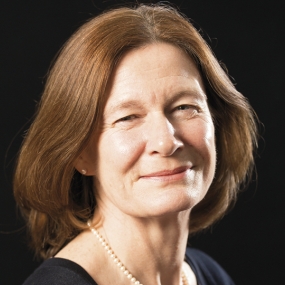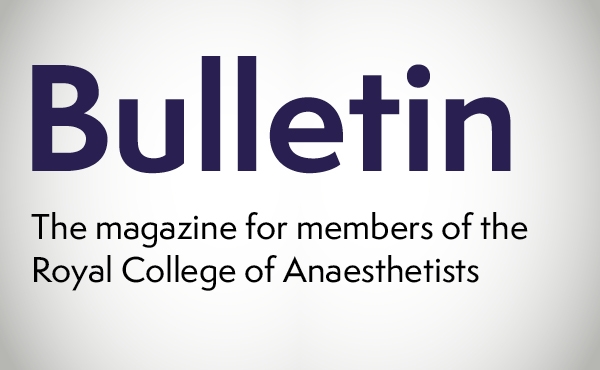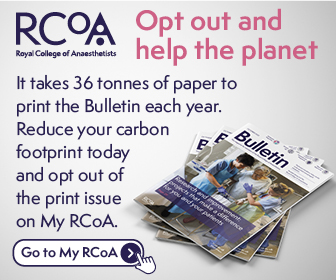
Staying connected in the year ahead
I wish you all a very Happy New Year. Many of you will have been working over the festive season, but I hope you were able to find some time to rest and recharge with friends and family. As the year begins, I am acutely aware of the challenges we are all facing at work as we move into the peak of extraordinary winter pressures in the NHS.
Ongoing workforce shortages compound these pressures, and while we very much welcome the government’s commitment to publish a long-term workforce plan for the NHS, we are still far from having adequate staff levels. Over the course of this year, we will continue to advocate for the funding and training places that are necessary to build a workforce ready to deliver safe and effective patient-centered care. We will also maintain pressure on the government to undertake reform of the current pension system, which is forcing many experienced doctors to reduce their hours or to retire early.
I understand the impact of workforce pressures on morale and wellbeing, with so many of you covering extra shifts and sessions at late notice and filling gaps to support your departments and ensure timely care for patients.
Supporting your wellbeing
I understand the impact of workforce pressures on morale and wellbeing, with so many of you covering extra shifts and sessions at late notice and filling gaps to support your departments and ensure timely care for patients. Last year, we appointed Council member Dr Ramai Santhirapala as our wellbeing lead, and she has been developing a programme of work with established stakeholders, including the Association of Anaesthetists and others, to coordinate our efforts on workforce wellbeing. We hope to report on this later this year.
Wellbeing principles continue to be embedded in both GPAS and ACSA standards because they are integral to the running of a good anaesthetic department. We know that many departments have already developed exemplary local initiatives, for example in relation to the provision of comfortable rest facilities and transport for those on night shifts. In the future we would like to facilitate the sharing of this best practice in wellbeing initiatives around the UK.
Industrial action in the NHS
At the time of writing, several unions are consulting or balloting their members on taking industrial action in the NHS. The British Medical Association’s ballot of junior doctors is imminent, in which many of our members will be eligible to vote. As a Royal College and a charity, we are not involved in the negotiation of terms and conditions of contracts or pay discussions – that is the remit of the unions. We do, of course, recognise that doctors, like everyone, have the right to take industrial action.
Our job is to ensure the voices of our members are heard and understood, and to support you at all stages of your career. To that end, we have presented evidence to the government on the impact of its proposed pay deal, highlighting that the exclusion of doctors in training and SAS doctors on the reformed contract is likely to exacerbate the NHS staffing crisis at a time when the workforce is already tired and demoralised. We will also support our members in making patient safety a priority during any period of industrial action.
Through our State of the Nation report and our contribution to the work of the Academy of Medical Royal Colleges, we have repeatedly made the case for why we need action to address workforce shortages and to ensure that medical staff feel valued and supported. We will continue this work as part of our commitment to be a leading voice for our specialties among policy makers.
Unrecognised oesophageal intubation
I would like to update you on work the College has undertaken, in partnership with the Association of Anaesthetists and the Difficult Airway Society, in response to the coroner’s Regulation 28 report following the tragic death of Mrs Glenda Logsdail. I know that many of you will have engaged with this work, which has included:
- A new, dedicated webpage featuring awareness and training resources designed to prevent unrecognised oesophageal intubation. This includes our “No trace, wrong place” video. In the last year we have seen over 12,000 visits to the page.
- Delivering educational talks at our events – reaching over 5,000 delegates in the last year. This included a session devoted to Mrs Logsdail’s case at our 2021 Winter Symposium, at which representatives of Mrs Logsdail’s family were present. These talks are also freely available on our website.
- Publishing multiple articles in the Bulletin, and in the member magazines and newsletters of the Association and the Difficult Airway Society.
- Publishing articles and editorials in the British Journal of Anaesthesia and Anaesthesia.
- Promoting our awareness campaign on our social media platforms. As an example, one Twitter thread on the topic of Mrs Logsdail’s death reached over 375,000 people.
- Raising awareness among other professionals involved in intubation, for example by writing articles for the Faculty of Intensive Care Medicine’s member magazine, the College of Operating Department Practitioners’ newsletter and the National Freedom to Speak Up Guardian blog.
- Sharing the lessons to be learned from Mrs Logsdail’s death with colleagues outside the UK, through educational talks to organisations including the European Airway Management Society, the Australian Safe Airway Society and the International Anaesthesia and Acute Care Conference in the United Arab Emirates.
- Working with the Association of Anaesthetic and Respiratory Device Suppliers (Barema) to support the development of engineered solutions to the issue of variable configurations of the displays and alarm notifications on the monitors we use.
Multidisciplinary team training
We have developed resources for multidisciplinary team training on the prevention of oesophageal intubation. Recognising that time is often the biggest barrier to team training, we have developed three, short, flash card simulations, designed to be delivered in a talk-through scenario in five minutes.
We asked Clinical Directors of all anaesthesia departments in the UK to promote our campaign and to trial the use of the flashcards in their departments. Despite this period coinciding with another wave of the COVID-19 pandemic, we received responses from over half of departments and were pleased to hear that the vase majority of them had delivered multidisciplinary team training to prevent unrecognised oesophageal intubation.
I would like to thank colleagues at the Royal United Hospital in Bath, who have developed a package of “tea trolley” training on the subject of oesophageal intubation, which we have also made freely available on our website. The focus of this type of training is on short teaching sessions that are brought to staff during their normal working day (or night), with the addition of tea and cake. The training content aligns with our “No trace, wrong place” campaign, helping to embed a consistent understanding and awareness of the correct use of capnography to prevent undetected oesophageal intubation.
A sustained approach
Embedding this work requires a sustained approach and we will continue to promote the campaign over the course of this year and beyond. Later this month, the Association of Anaesthetists and the Difficult Airway Society will launch their Human Factors guidance for Anaesthesia, and we will work with them to promote and embed the recommendations. Through our simulation workstream, we will develop additional resources for multidisciplinary team training. The Safe Anaesthesia Liaison Group will also continue its work to prevent unrecognised oesophageal intubation.
If you have not yet done so, I encourage you all to visit our website to access the resources available, and I thank everyone who has worked with us to ensure we do all that is possible to reduce the chance of similar tragedies occurring.
More from the Digital Bulletin
- Bulletin: January 2023
- Editorial
CEO update
- Bulletin: January 2023
- Editorial
From the Editor
- Bulletin: January 2023
- Editorial
Unrecognised oesophageal intubation
Return to the table of contents.
Are you enjoying the Digital Bulletin?
It's now very easy to opt-out of the print version and only receive the digital Bulletin. Log in/sign up for My RCoA untick the print option and tick the digital option.


